Google Chromecast Review - An Awesome $35 HDMI Dongle
by Brian Klug on July 29, 2013 9:45 PM EST- Posted in
- Smartphones
- Media Player
- Android
- Mobile
- HDMI
- Chrome
- Tablets
- Chromecast
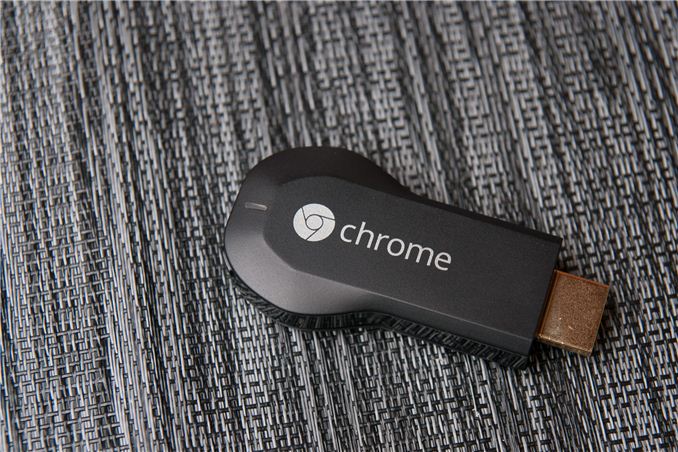
So I have a confession to make – I didn’t hate the Nexus Q. While I didn’t necessarily love it and use it daily like a small minority of my peers did, I also didn’t immediately declare the product an unmitigated disaster like the vast majority of people. The fate of that product was so quickly decided that I hadn’t even begun writing my review when the whole thing was terminated. When I spoke with Googlers about Nexus Q, what was obvious to me was that the Q had begun as an audio-only product that later on had HDMI added, and that tiny bit of context made all the difference in understanding the choices behind it. I left the Nexus Q plugged into my AV Receiver up until the most recent set of Google Play apps killed functionality entirely.
Ultimately the price of the Nexus Q was its undoing ($299), not necessarily its functionality or even its somewhat awkward spherical form factor. The concept was relatively sound – a network-attached appliance that played back movies and music from Google’s servers directly, rather than streaming them from device to device on the same network. The Q ran Android 4.x atop an OMAP4460, literally the same platform as the then-flagship Galaxy Nexus, just sans cellular connectivity, which made it a logical choice.
The Nexus Q was killed off before other services could be added, but at a high level the Q’s functionality as a playback device rather than streaming endpoint carried onto its successor, the Chromecast.
The Chromecast is obviously everything the Q should’ve been. It’s a simple, small, $35 HDMI dongle, powered by USB, that’s designed to discreetly plug into the back of a TV. There’s been much talk about the power requirement of the Chromecast, USB is indeed required for operation, but just about every modern TV has USB ports on the side for attaching mass storage or powering accessories like this. In fact, the Chromecast’s form factor is already a popular one for Android-powered HDMI dongles and Miracast sinks, as well as a variety of other small appliances. I’ve confirmed with Google that MHL-HDMI is not in fact supported by the Chromecast, meaning it can’t be powered by a TV that includes the spec (which can deliver up to 500 mA at 5 V), straight HDMI can only supply 50 mA at 5V. I’ve yet to encounter a TV with MHL-HDMI myself, including on the 55-inch LCD TV I purchased just 3 months ago.
Inside the box for the Chromecast is the device itself, a relatively long microUSB cable, USB power supply, and HDMI extender. Funnily enough the USB power supply appears to be the exact same as the previous generation Motorola USB charger (5V, 850 mA), just with a different exterior – is this the first Motorola product out of Google proper?
The HDMI extender cable helps get the Chromecast behind a TV if you need to turn it 90 degrees or have an inset port with inadequate clearance like I do on my front-facing HDMI accessory port.
There’s not much to talk about regarding aesthetics of the Chromecast itself, it’s a dongle with a rounded bulge at one end, and HDMI port at the other. There’s a reset button on the side, microUSB port for power, and a status LED on top. On the bottom are regulatory markings. My only complaint about the Chromecast’s design is this status LED, which inexplicably is bright solid white whenever the device is on, making it distracting in a dark living room or bedroom. Nothing electrical tape can’t solve, but an inexplicably poor choice for a media center playback device given that bright LEDs are a known no-no.
The hardware is what it needs to be – small, simple, and conducive to the low price point. The Nexus Q was a solid bowling ball in comparison, primarily thanks to the analog audio amplifier and hardware it really didn’t need. By keeping unnecessary I/O to a minimum the Chromecast ends up being a nice and small streaming appliance.


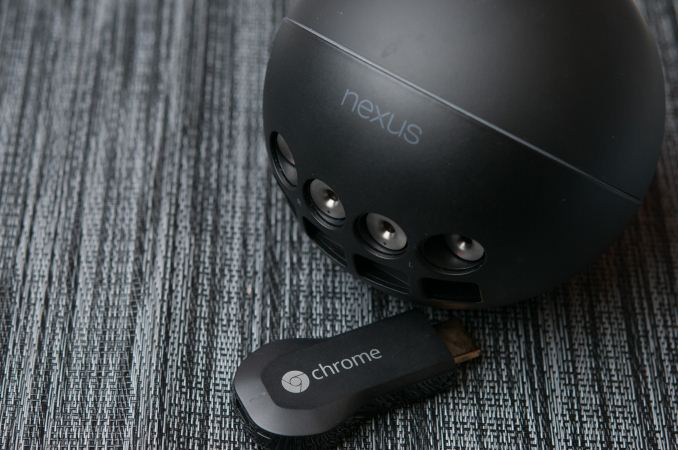
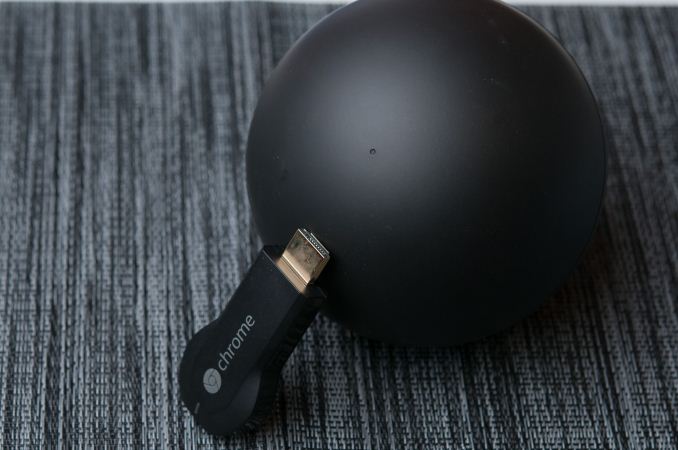

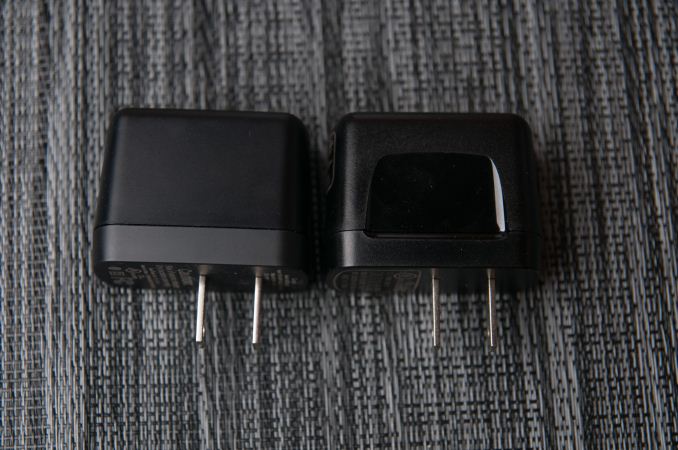






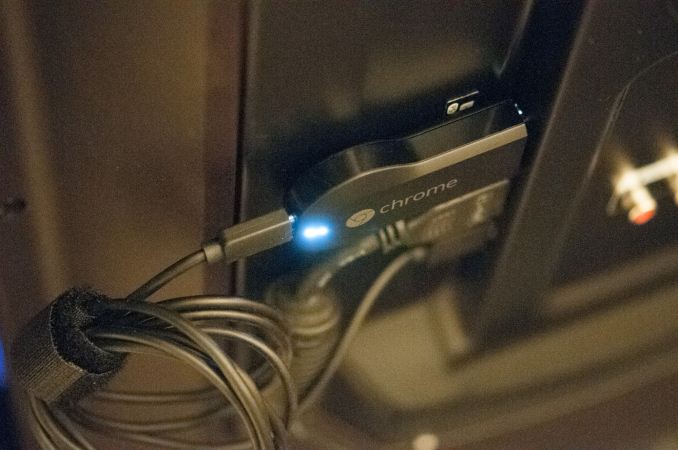








105 Comments
View All Comments
MKBL - Tuesday, July 30, 2013 - link
I'm confused. Right now I have a laptop with broken screen connected to a TV through HDMI. This setup handles most streaming efficiently, and I wonder if Chromecast will replace it with better efficiency. Maybe I'm facing my moment of being a tech-norant at age of 41, but I don't get the concept of the Chromecast. Does it receive all media data through laptop or tablet/smartphone that controls it remotely, or will it be streamed directly to Chromecast, which then decode it once the remote control - selecting channel/source, etc. ? If it is the former case, what is the difference between having a laptop connected and Chromecast connected to TV? I understand that the size is huge difference, and the price as well, but someone like me with extra laptop or media box like Zotac Z-box already, is there any benefit of having Chromecast? I'm not rejecting it, I am just confused.savagemike - Tuesday, July 30, 2013 - link
You will see no benefit.Chromecast uses both methods you describe. For the apps with it built in the controlling device is doing nothing but acting as a control channel. The content is streamed directly from the cloud source by the chromecast device.
For the beta tab-casting feature using a Chrome browser on a computer - the source computer is encoding everything and streaming it to the Chromecast. It is actively mirroring it's content to the Chromecast itself.
To the Chromecast device itself these thing are indistinguishable I imagine.
In any event if Google could hand out laptops with no screens for $35 this would be an even more amazing product.
Wolfpup - Tuesday, July 30, 2013 - link
Dumb question, but AppleTV basically does this same thing, but using OS X or iOS, right? Like Airplay can stream arbitrary content from OS X or iOS? (Though I guess not Windows?)Sm0kes - Tuesday, July 30, 2013 - link
Correct, this looks to compete directly with Airplay. I think the excitement around this stems from the fact that 1.) it's cheaper than anything airplay enabled 2.) and more "open" (as opposed to being locked to a single platform).Obviously, it'll take time for the developers and hackers to really dig in, but it's definitely a promising little device.
steven75 - Monday, August 5, 2013 - link
It does a subset of the things ATV does, since ATV can:-Be used standalone without any other device
-AirPlay local files from device-to-device (pictures/videos/apps)
-Full 1:1 screen mirroring, no browser needed
-Act as AirPlay receiver for multiple streams simultaneously (multi-room A/V)
-More support from content owners: Hulu, HBO Go, MLB/NBA/NHL, etc
Those things are definitely worth the extra $64 to me. YMMV.
matt30 - Tuesday, July 30, 2013 - link
It seems that only the beta channel of Chrome has the option to share your entire desktop. You might want to test that.Also, I don't think the "second mode" as you called it, works purely over LAN. In part I think that's the source of the delay. Try casting a tab then cutting your internet. If I'm right the tab casting should stop despite the fact that there is still a LAN.
Sm0kes - Tuesday, July 30, 2013 - link
Interesting. I can't imagine google would be encoding via the cloud?matt30 - Tuesday, July 30, 2013 - link
I'm sure the content is encoded locally but I suspect something funny might be happening with the routing.savagemike - Tuesday, July 30, 2013 - link
Why do you suspect this if you apparently don't have a unit to test it on?matt30 - Wednesday, July 31, 2013 - link
The latency and use of webRTC to transmit screen information.